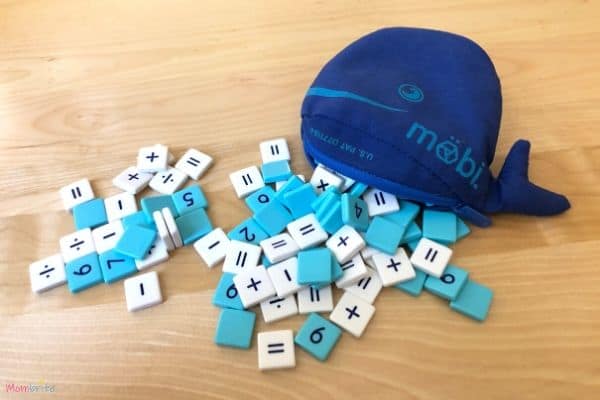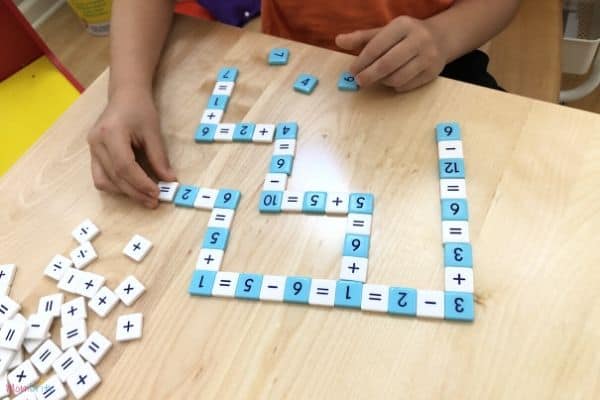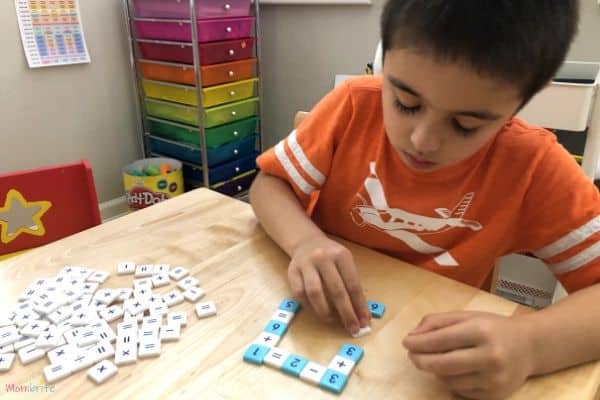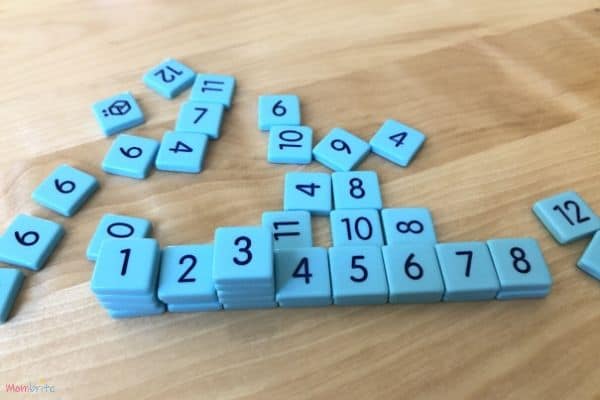After spending the majority of my childhood in Taiwan, I always pictured learning math by doing worksheets. But worksheets can be repetitive and boring, especially when it comes to math facts. My 6 years old son is not one to sit still and attempts to have him finish a page of math drills often end up in frustration and tears (for both him and mommy!).
If the above situation sounds like you, gameschooling might be the perfect solution for your kid to learn math. Playing fun board games to learn and practice arithmetic is not only great for reinforcing math concepts, but also great for family bonding. And as far as the best math board games go, Mobi Max takes the gold.

Let’s dive deeper into why Mobi Max is an essential part of our homeschooling!
Overview of Mobi Max
This is an honest and unbiased review of Mobi. I did not receive compensation for this review. This post contains affiliate links. Please see my full disclosure policy for details.
Mobi Max takes tedious math drills and transforms them into an exciting game. The goal of the game is to make math equations as quickly as possible. To win, you must connect the tiles in a crossword-style grid, and the first to use all their blue tiles wins.

You might have seen the standard Mobi Math on Amazon, and read the subpar reviews regarding how the game has limited addition and subtraction tiles. Kids in preschool and though first grade are not yet familiar with multiplication and division and therefore cannot play those tiles in their equations.
Timberdoodle carries an exclusive version of Mobi Math called Mobi Max, which includes extra addition/subtraction tiles for the younger kids. This means your child can make more equations with their tiles and get lots of practice with basic math facts.
Features:
- Suitable for ages 0 months and up
- Players: 1-6
- Blue whale pouch
- 180+ acrylic plastic tiles
Specifications:
- Dimensions: 5.91 x 5.51 x 1.57 inches
- Brand: Mobi Games
My Review
We bought Mobi Math when my son was 5 years old and just starting to master addition. In the beginning, my son was confused by how he could connect the equations together. We simplified the rules so it was suitable for his age and had fun using the tiles to review how to add numbers.
Now that my son turned 6 and is heading to first grade, he can play the “math Scrabble” game no problem with addition and subtraction operators. He would sit there and continue forming different equations until there are no more tiles. I would race against him by playing only with the multiplication and division operator tiles – it’s not easy!

My preschooler has not yet learned how to add, so we use the tiles for number recognition and matching. She would stack all tiles with the same numbers together. Recently, we started having her order the numbers from 1 to 10. This way, she feels included while I play the game with my 1st grader.

I personally love the little blue whale pouch. We love board games and have lots of them, but they take up so much space! The Mobi whale pouch is about the size of your palm, so it’s perfect for traveling as well.
Final Verdict on Mobi Max
You can see how Mobi Max is designed to engage and motivates your kid to do simple calculations all the while having fun. This math game for kids definitely helped build my son’s confidence in his arithmetic skills and you could see how proud he is when he builds a huge network of equations.
Mobi Max is part of Timberdoodle’s Third-Grade Curriculum Kit along with other fun educational materials. Trust me, you want those extra addition and subtraction tiles. Check out Timberdoodle and grab your own blue whale today!
Also check out these reviews of the awesome products on Timberdoodle:
The post Mobi Max Game Review appeared first on Mombrite.
